Picture this: It’s the year 2000, and the mood is bitter in the Sega offices. The Dreamcast should have been a hit! It could push incredible graphics, had support for online play, a strong marketing push, and a small but perfectly formed library of killer titles. But it’s just not selling. Sega needs something to push them over the edge, a game that’ll make the world sit up and take note, something to squash the PlayStation 2 hype for good.
A moment of silence. Sega veteran Shun Nakamura raises his hand and says, in a nervous voice: “How about maracas?”
And so Sega decided to splash their precious funds on Samba de Amigo, an $80 deluxe maraca peripheral for their failing console. Needless to say, maracas did not save the Dreamcast. But, in the console’s dying days and with stores putting their Dreamcast stock on clearance, I scooped up a set and had a blast.
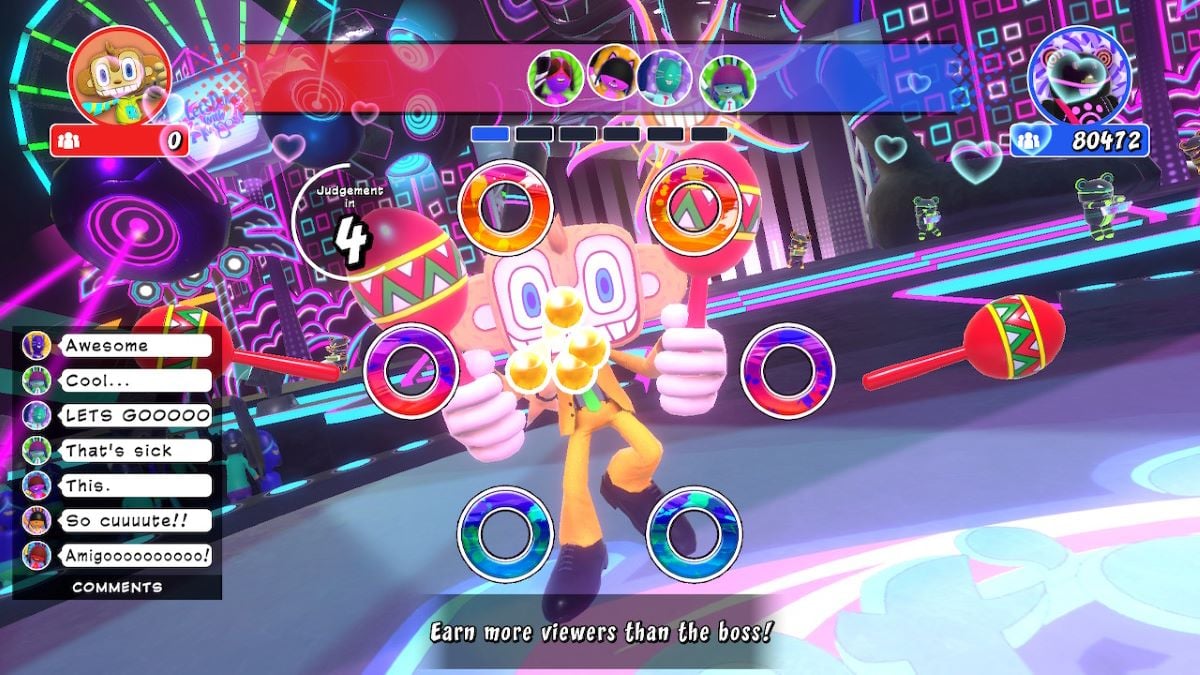
Between now and then, I’ve played the PlayStation 2 EyeToy version of the game as part of Sega Superstars (which worked surprisingly well) and the 2008 Wii port (which didn’t). Since then, Amigo has been relegated to cameo appearances in other games. It’s always nice to see the little guy, but the chances of him ever getting a starring role again felt remote at best. Until now!
Over two decades later it’s finally time to get my maracas on. Samba de Amigo: Party Central on the Switch is here, the first true sequel to the Dreamcast original. At first glance, not much has changed: the core of the game is still shaking your maracas (or in this case, Joy-Con) to the beats on screen and striking funky poses. Criminally, the Switch version does not include actual maracas, though I picked up some plastic maraca Joy-Con holders for a couple of bucks online which made the experience much more fun.
First impressions of Party Central are positive. There’s some grumbling that the songlist has ditched the Latin music focus in favor of pop, but I’m perfectly happy grooving away to Carly Rae Jepson, Lady Gaga, Charlie XCX, and Ariana Grande. Rounding out the songlist are a couple of older hits like Karma Chameleon, I Will Survive, and You Give Love a Bad Name, y’know, for the moms and dads when it’s their turn.
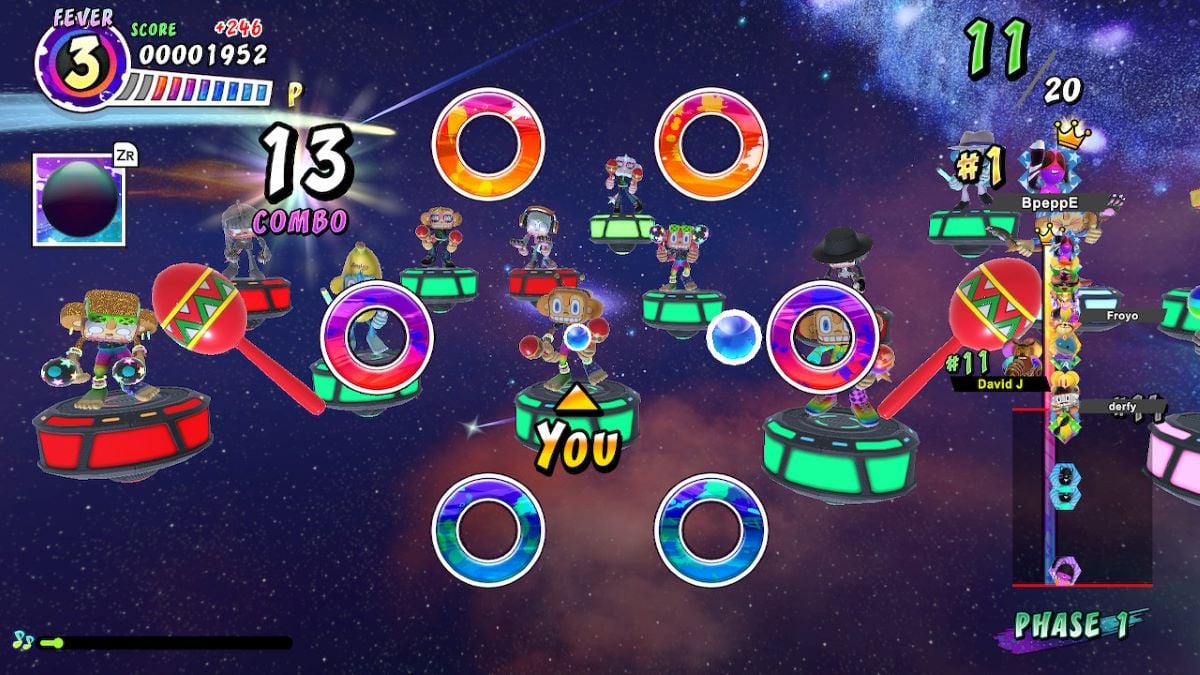
After a few practice songs to warm myself up, I jumped into the online World Party mode, in which 20 players compete against each other and the worst are eliminated at the end of the round. I placed a respectable third, and the sight of other customized Amigos bopping away in the background brought a smile to my face.
From there it was a quick jaunt over to StreamiGo, the single-player mode. Here you work through missions on a fake streaming site to gain followers, first becoming the representative of your city, then your country, and finally the world. Each song in this mode has special requirements like completing it with an S grade or limiting the number of mistakes you can make. But it was while playing this that I realized something is very, very wrong with Party Central.
The core of Samba de Amigo on Dreamcast was timing. You must shake the maraca as the beat passes through the target. Shake too early or late and you get a “good” or “great” rating, miss entirely and you get a “boo”, nail it exactly for a “perfect.”
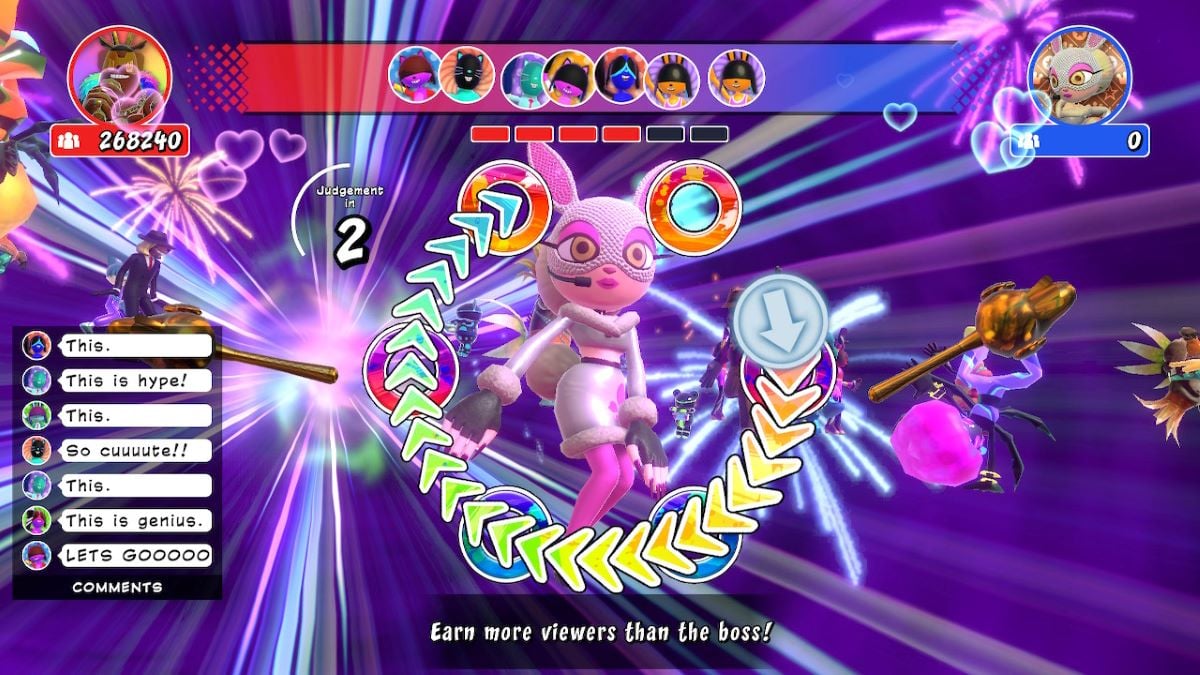
That’s still here in Party Central, but there’s a new wrinkle that renders the core of the gameplay redundant. There’s no penalty for shaking at the wrong time, so all you need to do is shake the maraca repeatedly regardless of where the beats are on the screen and as they pass through the target you’ll be awarded an automatic perfect rating. This removes any need for precision, making Party Central a rhythm action game in which you don’t need to be in rhythm.
Compounding that is that the motion detection for the poses is absurdly generous and will give you a perfect if you’re even vaguely in the right positions and that the ‘Slide’ mechanic where you draw shapes using the JoyCons is so busted you can stay completely still and the game will act as if you’ve done the motion.
Once I figured that out, the initially impossible-sounding single-player challenges became a cakewalk. Reach a combo of 600? No problem. Beat a song while only missing four notes? Easy. Score 80 ‘Perfect’ ratings in a row? *Yawn*. I’m pretty good at rhythm action, though I shouldn’t be able to full-combo ‘Super Hard’ difficulty songs the first time I boot it up.
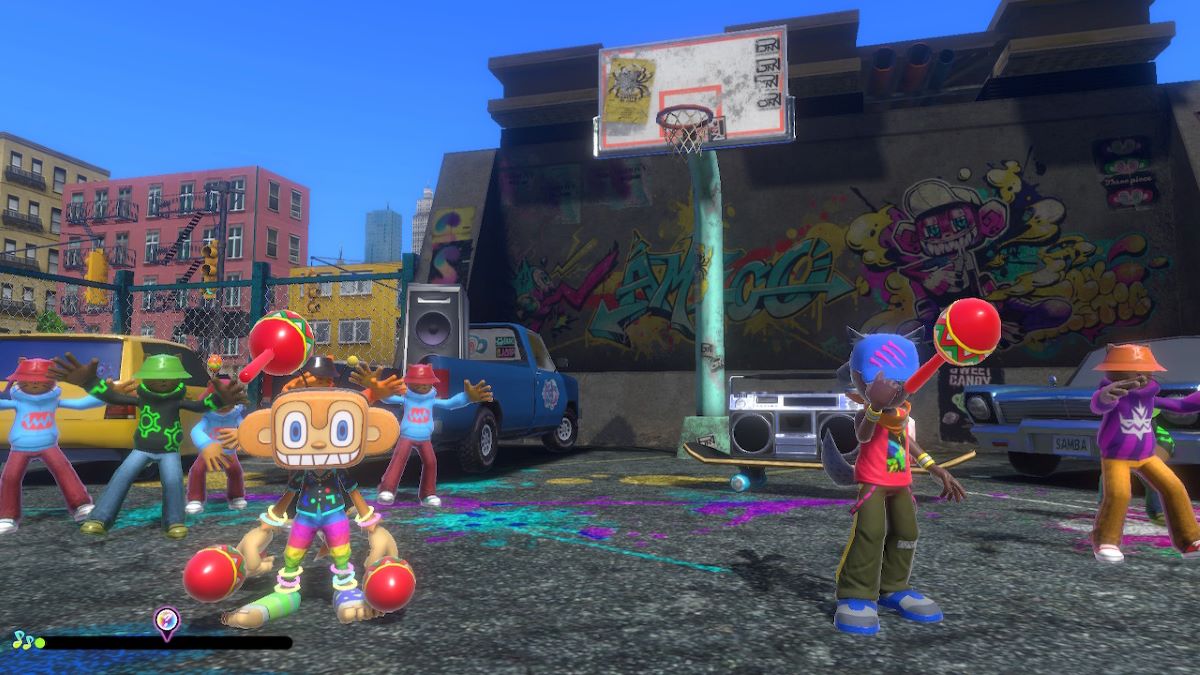
I guess can understand why they’ve done this. Both previous Samba de Amigo releases have had issues with their motion controls, with the Wii version being particularly imprecise since the Wiimote just wasn’t quite up to the job. With Party Central, Sega must have considered the reactions to the Wii version and figured it’d be less frustrating if the game just awarded players perfect marks regardless of how well or poorly they played.
Nakamura directed both the original and this, and in a June interview he shed some light on why the game has been simplified:
“When it comes to rhythm games, there are many games that are very stoic and serious, which requires highly skilled players, and I think there are many games with really great players. However, Samba de Amigo is different from that. ‘Silly fun’ comes first, followed by rhythm, but the most important thing is to be able to enjoy the music.”
Maybe Sega was right to focus on “silly fun”. Party Central is clearly aimed at a casual crowd looking for a light-hearted local multiplayer game rather than hardcore rhythm action gamers, but the removal of the precision drains away any motivation to improve and master its systems. Anyway, the first game was also “silly fun” while also requiring you to be in step with the music, so why fix what wasn’t broken?
As a longtime Samba de Amigo fan this is all quite disappointing. I’d assumed the franchise was stone-cold dead until the Party Central reveal earlier this year, so realizing that this unlikely revival had removed any skill requirement from high scores left me distinctly underwhelmed. Maybe I’m taking a game about a cartoon monkey dancing to Ricky Martin too seriously, but I’d hoped for much more than this.
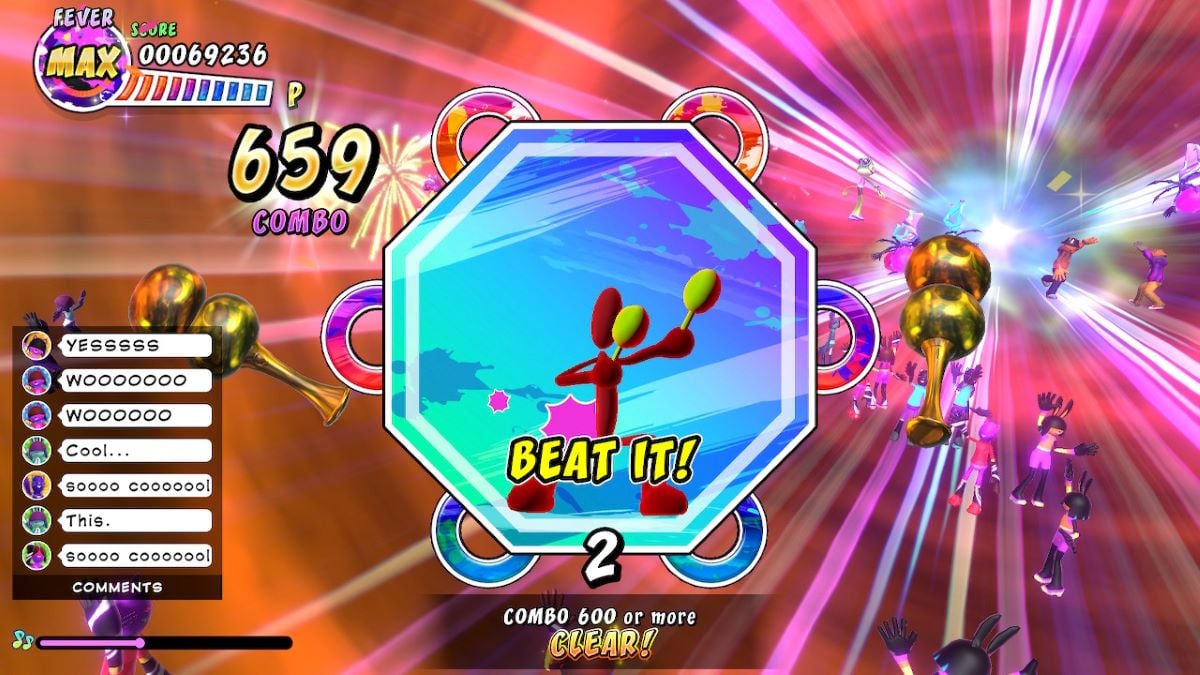
Despite all that, Party Central is indeed silly fun if you can get a bunch of people around to shake their Joy-Con to pop music. The game maintains the infectious enthusiasm, explosions of color, and joyful Carnival atmosphere that made the original such a breath of fresh air in a stodgy testosterone-fuelled gaming landscape. A few margaritas with some buds and, as promised, you’ll be in “Party Central.”
For me, Party Central was a swing and a miss. Yes, it’s “silly fun”, but by removing the skill requirement doing well in a song is now meaningless. What a shame.
This review is based on the Nintendo Switch version of the game. A copy was provided for review by Sega.
Disappointing
I've been playing Samba de Amigo since the Dreamcast days and was so hyped for Party Central that I bought plastic maraca shells for my Joy-Con. But my hopes were dashed like so much Carnival confetti after I realized what's changed. This is a rhythm game that doesn't reward rhythm.
Samba de Amigo: Party Central
